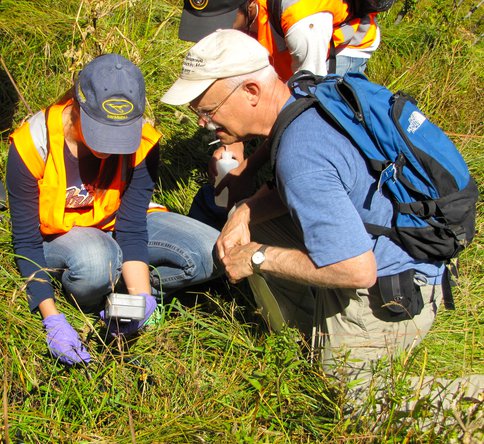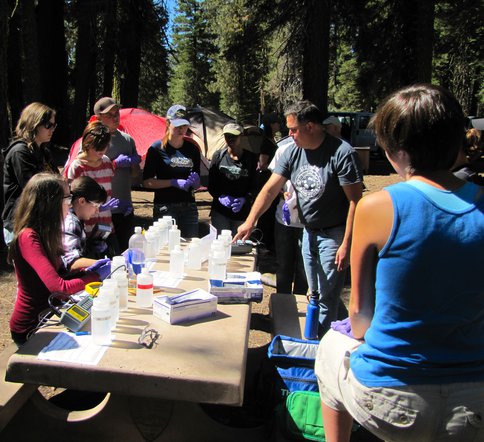2012 Annual Science Report
 NASA Ames Research Center
Reporting | SEP 2011 – AUG 2012
NASA Ames Research Center
Reporting | SEP 2011 – AUG 2012
EPO Activity: Astrobiology Student Intern Program at Lassen Volcanic National Park
Project Progress
The NASA Astrobiology Institute Ames Team, Lassen Volcanic National Park and Red Bluff High School have formed a mutually beneficial partnership that engages high school students in the collection of scientific data for NASA astrobiologists, the National Park Service and university researchers (Figure 1).
From the start of the intern program in Pilot Year 1, 2008, to the continuation of Year 4 in 2011-2012, 27 high school juniors and seniors from Red Bluff, CA have participated in the Astrobiology Student Intern Program at Lassen National Park. The Ames Team, Lassen rangers and science teachers have worked together to train the students in field research and sample collection techniques. Lassen is a valuable resource to NASA because of its parallels with volcanism and hydrothermal activity on Mars. This volcanic park provides access to many extreme environments that host microbial communities. The hydrothermal features at Lassen are key research targets for NASA’s astrobiology program.
The theme of 2011-2012 program is “Volcanoes, Water and Microbial Life in Lassen Volcanic National Park: Insights for Mars Exploration.” The student interns are divided into two research groups: (1) geology/water and (2) water/biology. These groups are characterizing how the rocks are weathered or dissolved by meteoric input and by hydrothermal activity that ultimately releases chemical species into solution that the microbes can utilize. The interns are focusing on three distinct field sites with the goal of understanding how the rocks influence the water chemistry at each site, which in turn dictates which microbial populations are present.
The program has grown into a structured yearlong course, complete with a class syllabus outlining introductory lectures on water chemistry, geology and microbiology, integrated lectures emphasizing the linkages between the areas, lessons on how to analyze and plot data, and guidance for intern research projects and year-end presentations. It has also expanded to include more in-person lectures, labs and fieldtrips to additional field sites; increased communication between the students and the Ames Team via a Polycom communications system, and a summer internship. (Figure 2). The end product of the interns’ research will be an online, relational database, which, as it expands over the years, will be a valuable resource for extreme environment analog research. Putting this all together – classroom and online interactive lectures combined with experiments in the lab, sample collection fieldtrips, visits to Ames Research Center, creation of a relational database and a summer internship – allows the students to piece together a story about how water and volcanic rocks interact to create habitats for microbes. (Figure 3)
The Astrobiology Intern Program explores the environmental relationships between rocks, water and microbial communities. Ames Team PI Dave DesMarais works with an astrobiology intern to measure the acidity of a freshwater stream at Lassen’s Warner Valley with a portable pH meter. The acidity of water from a freshwater stream is mostly determined by the soil and rock types in the area.
To prepare the astrobiology interns for a day of field work, Ames team member Mike Kubo first tests their knowledge of conductivity and pH by having them compete in a game of “Guess the Solution.”
The back of a van, a white bed sheet, duct tape, a portable generator, a starlit night and a crackling fire all combined to make this year’s first fireside lecture by Ames team member Niki Parenteau a big hit!


